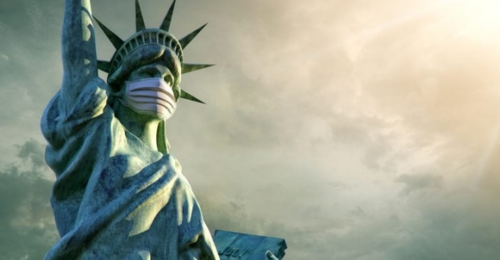

We cannot switch in and out of totalitarianism at will.” We either choose freedom, or we choose to live under authoritarian rule. Even if (and that’s a big if, at this point) restrictions are lifted, public attitude can place freedom on shaky ground, as public acceptance of overreach will allow for the same to occur again and again at a moment’s notice.
This is a serious problem, as there will always be other epidemics and pandemics. There is always the threat of terrorism and climate change. There will always be a public health calamity, be it obesity or diabetes, that can be used as justification for government intrusion into our private lives.
“A threshold has now been crossed, “A big taboo has gone. Other governments will say that the only question that matters is whether it works and whether they can ‘get away with it’ … We already have a striking example. The vaccine, which was supposed to make the lockdown unnecessary, has become a reason for keeping it in force …
“Infections, hospitalizations and deaths are plunging, but millions who are at virtually no risk are being kept in house imprisonment. This is being done mainly because a selective regime of controls would be too difficult for the state to enforce. Coercion quickly becomes an object in itself.”
Personal liberty is worth fighting for
Personal liberty, as Sumption points out, is critically important, and perhaps most important of all, for our mental and physical health, is the freedom to interact with other human beings. It is an absolutely crucial and most basic of human needs. Infants robbed of physical interaction fail to thrive and are at increased risk of death.
But children, adolescents, adults and the elderly have no lesser need for it. We may tolerate it for longer without marked ill effect, but over time, it takes its toll on health, emotional stability and longevity. The fact that we’re allowing government to ban human interaction is a dire sign of a society at the brink of self-destruction.
“I do not doubt that there are extreme situations in which oppressive controls over our daily lives may be necessary and justified,”
An epidemic of Ebola, with a death rate of 50%, for example, might qualify. However, COVID-19 is nowhere near that serious a threat. As noted by Sumption, COVID-19 “is well within the range of perils which we have always had to live with, and always will.”
Data show the overall noninstitutionalized infection fatality ratio is 0.26%. People under the age of 40 have a mere 0.01% risk of dying from the infection. The vast majority that test positive for SARS-CoV-2 have no symptoms at all, and most do not get seriously ill.
We must relearn to accept the inevitabilities of life
.jpg)
